Named after the poet born in Bilston, in 1862, and best remembered for his patriotic ballads. Sir Henry Newbolt is remembered chiefly for his patriotic and nautical ballads, such as Drakes’ Drum (1897). Perhaps his best-known lines are from The Island Race: ‘There’s a breathless hush in the close tonight/Ten to make and the match to win. But his Captain’s hand on his shoulder smote/Play up! play up! and play the game!’
Prints and text about Sir Alfred Hickman and Edward ‘Screw’ Woolley.
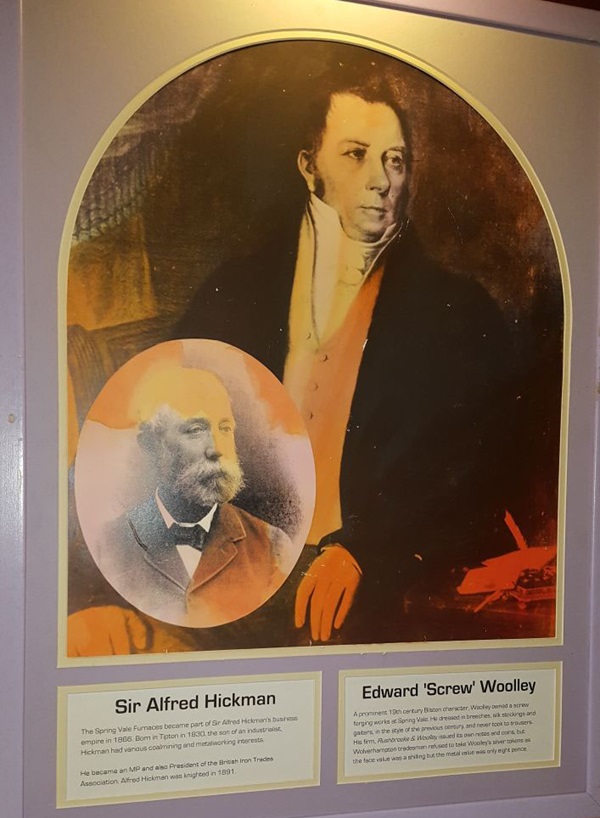
The text reads: Sir Alfred Hickman
The Spring Vale Furnaces became part of Sir Alfred Hickman’s business empire in 1866. Born in Tipton in 1830, the son of an industrialist, Hickman had various coalmining and metalworking interests.
He became an MP and also president of the British Iron Trades Association, Alfred Hickman was knighted in 1891.
Edward ‘Screw’ Woolley
A prominent 19th century Bilston character, Woolley owned a screw forging works at Spring Vale. He dressed in breeches, silk stockings and gaiters, in the style of the previous century, and never took to trousers. His firm, Rushbrooke & Woolley, issued its own notes and coins, but Wolverhampton tradesmen refused to take Woolley’s silver tokens as the face value was a shilling but the metal value was only eight pence.
Illustrations and text about the history of canals in the area.
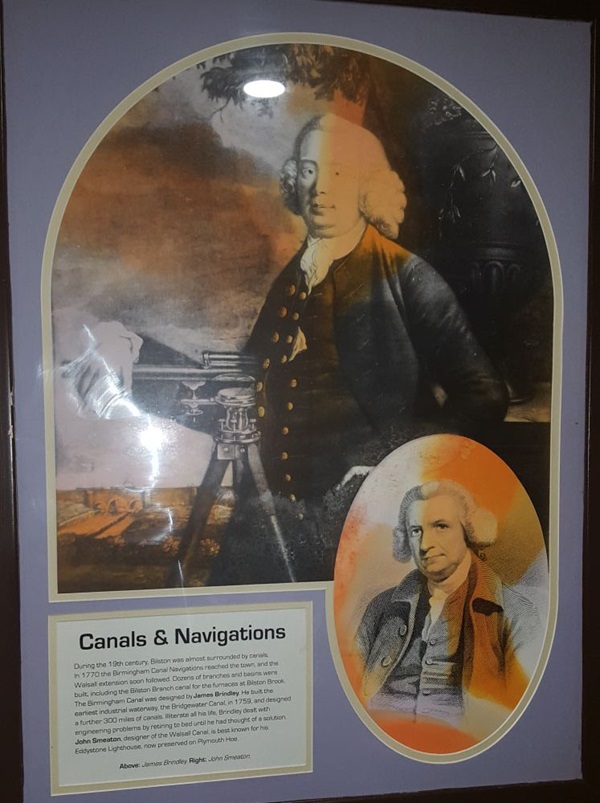
The text reads: During the 19th century, Bilston was almost surrounded by canals. In 1770 the Birmingham Canal Navigations reached the town, and the Walsall extension soon followed. Dozens of branches and basins were built, including the Bilston Branch canal for the furnaces at Bilston Brook. The Birmingham Canal was designed by James Brindley. He built the earliest industrial waterway, the Bridgewater Canal, in 1759, and designed a further 300 miles of canals. Illiterate all his life, Brindley dealt with engineering problems by retiring to bed until he had thought of a solution. John Smeaton, designer of the Walsall Canal, is best known for his Eddystone Lighthouse, now preserved on Plymouth Hoe.
Above: James Brindley Right: John Smeaton.
An illustration and text about the history of Bilston.
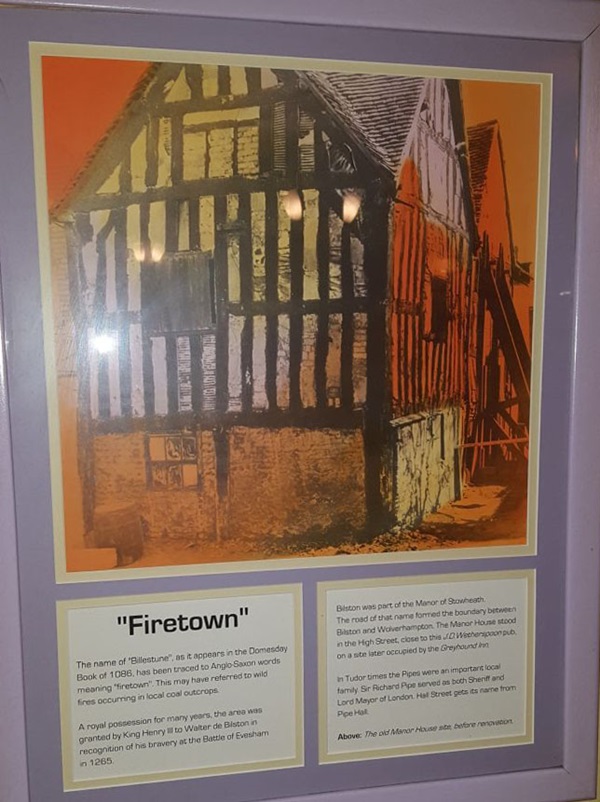
The text reads: The name of ‘Billestune’, as it appears in the Domesday Book of 1086, has been traced to Anglo-Saxon words meaning ‘firetown’. This may have referred to wild fires occurring in local coal outcrops.
A royal possession for many years, the area was granted by King Henry III to Walter de Bilston in recognition of his bravery at the Battle of Evesham in 1265.
Bilston was part of the Manor of Stowheath. The road of that name formed the boundary between Bilston and Wolverhampton. The Manor House stood at the High Street, close to this J D Wetherspoon pub, on a site later occupied by the Greyhound Inn.
In Tudor times the Pipes were an important local family. Sir Richard Pipe served as both Sheriff and Lord Mayor of London. Hall Street gets its name from Pipe Hall.
Above: The old Manor House site, before renovation.
Photographs and text about Zella Vondi.
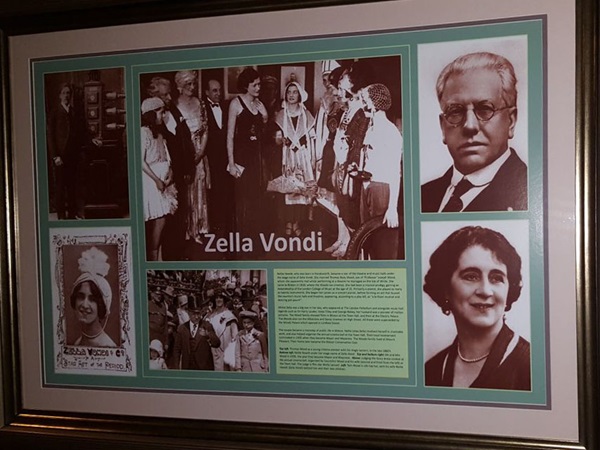
The text reads: Nellie Hewitt, who was born in Handsworth, became a star of the theatre and music halls under the stage name of Zella Vondi. She married Thomas Reay Wood, son of ‘Professor’ Joseph Wood, whom she apparently met whilst performing at a theatre he managed on the Isle of Wight. She came to Bilston in 1910, where the Woods ran cinemas. She had been a musical prodigy, gaining an Associateship of the London College of Music at the age of 15. Primarily a pianist, she played as many as twenty instruments. She began her career as a concert pianist, before forming an act that toured the country’s music halls and theatres, appearing, according to a play bill, as “a brilliant musical and dancing pot-pourri”.
Whilst Zella was a big star in her day, who appeared at The London Palladium and alongside music hall legends such as Sir Harry Lauder, Vesta Tilley and George Robey, her husband was a pioneer of motion pictures. The Wood family showed films in Bilston at the Town Hall, and then at the Electric Palace. The Wood family also ran the Alhambra and Savoy cinemas on High Street. All these were superseded by the Woods Palace which opened in Lichfield Street.
The couple became a mainstay of public life in Bilston. Nellie (alias Zella) involved herself in charitable work, and also helped organise the annual cinema ball at the Town Hall. Their local involvement culminated in 1935 when they became mayor and mayoress. The Woods family lived at Mount Pleasant. Their home later became the Bilston Conservative Club.
Top left: Thomas Wood as a young cinema pioneer with his magic lantern, in the late 1880s
Bottom left: Nellie Hewitt under her stage name of Zella Vondi
Top and bottom right: Mr and Mrs Wood in 1935, the year they became mayor and mayoress
Above: Judging the fancy dress contest at the annual cinema ball, organised by councillor Wood and his wife (second and third from the left) at the Town Hall. The judge is film star Molly Lamont
Left: Tom Wood in silk top hat, with his wife Nellie Hewitt (Zella Vondi) behind him and their two children.
Illustrations and text about coal mining in the area.
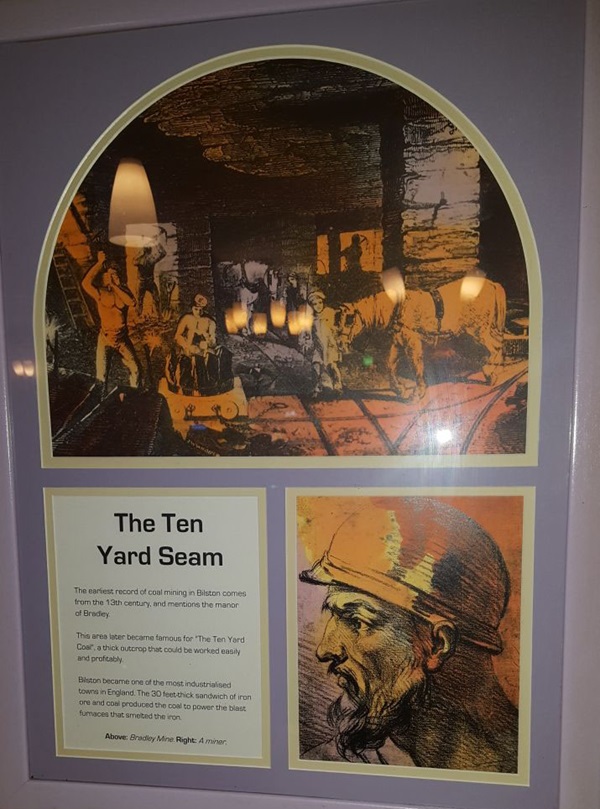
The text reads: The earliest record of coal mining in Bilston comes from the 13th century, and mentions the manor of Bradley.
This area later became famous for ‘The Ten Yard Coal’, a thick outcrop that could be worked easily and profitably.
Bilston became one of the most industrialised towns in England. The 30 feet-thick sandwich of iron ore and coal produced the coal to power the blast furnaces that smelted the iron.
Above: Bradley Mine
Right: A miner.
Prints and text about Wood’s Palace.

The text reads: The first ever Wood’s Palace was in Bilston’s Town Hall. From 1910 it was a regular venue for some of the town’s first film shows.
‘Professor’ Joseph Wood was a self-educated entrepreneur, who travelled a circuit of industrial Britain, giving demonstrations of his skills in palm-reading, hypnotism, deducing personality from hand writing and phrenology. This last practice was known as ‘reading the bumps’, or feeling the surface of the skull to deduce a person’s character.
The second Wood’s Palace, on Lichfield Street, opened in 1921. Designed by Val Prince, the auditorium seated 1,400. In the 1920s, the Woods also ran the Alhambra on High Street, the Theatre Royal, and the Savoy, which stood on the site of this J D Wetherspoon pub.
Thomas Wood, who married the pianist Nellie Hewitt, stage name Zella Vondi, became mayor of Bilston in 1935. Their son carried on with this business until 1971, when Wood’s Palace, then a Bingo Hall, was sold.
Above: The Wood family; Thomas Reay Wood (standing left), his father ‘Professor Wood’, his wife Nellie (seated centre) and their children.
Prints, an illustration and text about Sir Henry Newbolt.
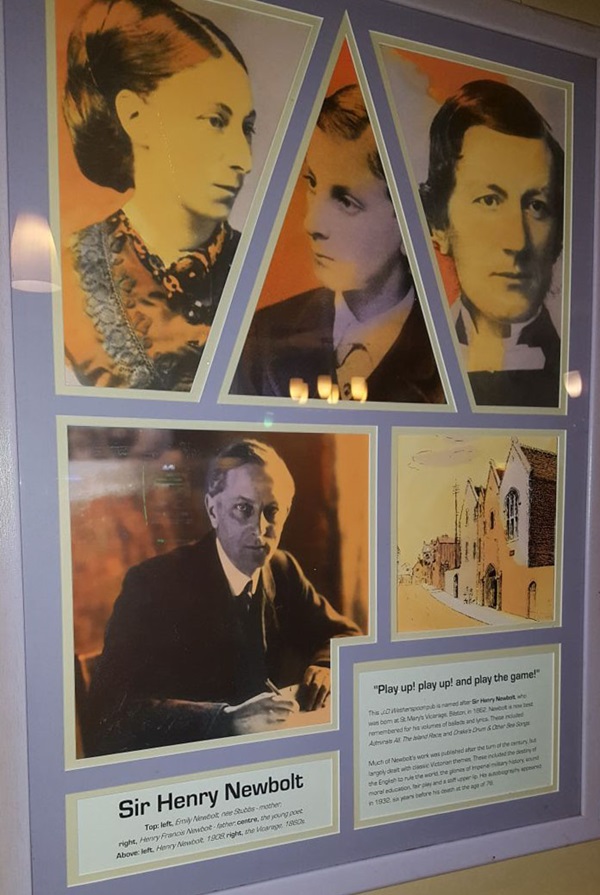
The text reads: This J D Wetherspoon pub is named after Sir Henry Newbolt, who was born at St Mary’s Vicarage, Bilston, in 1862. Newbolt is now best remembered for his volumes of ballads and lyrics. These included Admirals All, The Island Race, and Drake’s Drum & Other Sea Songs.
Much of Newbolt’s work was published after the turn of the century, but largely dealt with classic Victorian themes. These included the destiny of the English to rule the world, the glories of imperial military history, sound moral education, fair play and a stiff upper lip. His autobiography appeared in 1932, six years before his death at the age of 76.
Top: left, Emily Newbolt, nee Stubbs – mother, right, Henry Francis Newbolt – father, centre, the young poet
Above: left, Henry Newbolt, 1908, right, the vicarage, 1860s.
Illustrations and text about decorative processes.
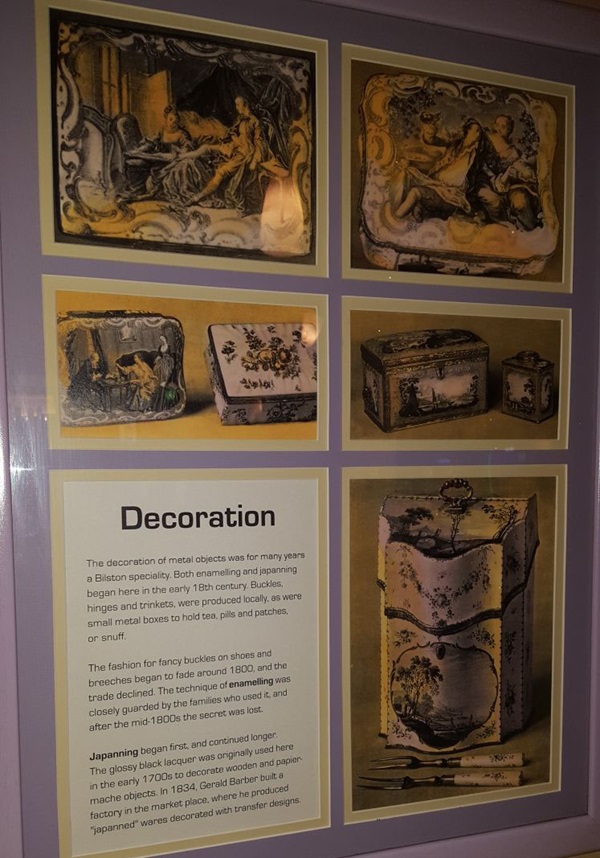
The text reads: The decoration of metal objects was for many years a Bilston speciality. Both enamelling and japanning began here in the early 18th century. Buckles, hinges and trinkets, were produced locally, as were small metal boxes to hold tea, pills and patches, or snuff.
The fashion for fancy buckles on shoes and breeches began to fade around 1800, and the trade declined. The technique of enamelling was closely guarded by the families who used it, and after the mid 1800s the secret was lost.
Japanning began first, and continued longer. The glossy black lacquer was originally used here in the early 1700s to decorate wooden and papier-mache objects. In 1834, Gerald Barber built a factory in the market place, where he produced ‘japanned’ wares decorated with transfer designs.
Prints and text about John ‘Iron Mad’ Wilkinson.
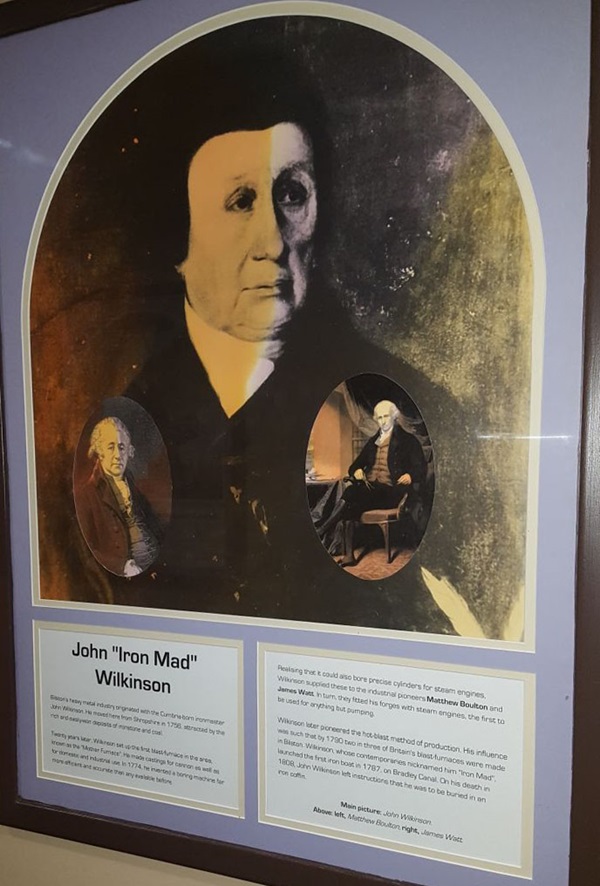
The text reads: Bilston’s heavy metal industry originated with the Cumbria-born ironmaster John Wilkinson. He moved here from Shropshire in 1756, attracted by the rich and easily won deposits of ironstone and coal.
Twenty years later, Wilkinson set up the first blast furnace in the area, known as the ‘Mother Furnace’. He made castings for cannon as well as for domestic and industrial use. In 1774, he invented a boring-machine far more efficient and accurate than any available before.
Realising that it could also bore precise cylinders for steam engines, Wilkinson supplied these to the industrial pioneers Matthew Boulton and James Watt. In turn, they fitted his forges with steam engines, the first to be used for anything but pumping.
Wilkinson later pioneered the hot-blast method of production. His influence was such that by 1790 two in three of Britain’s blast-furnaces were made in Bilston. Wilkinson, whose contemporaries nicknamed him ‘Iron Mad’, launched the first iron boat in 1787, on Bradley Canal. On his death in 1808, John Wilkinson left instructions that he was to be buried in an iron coffin.
Main picture: John Wilkinson
Above: left, Matthew Boulton, right, James Watt.
Prints and text about Tesco.
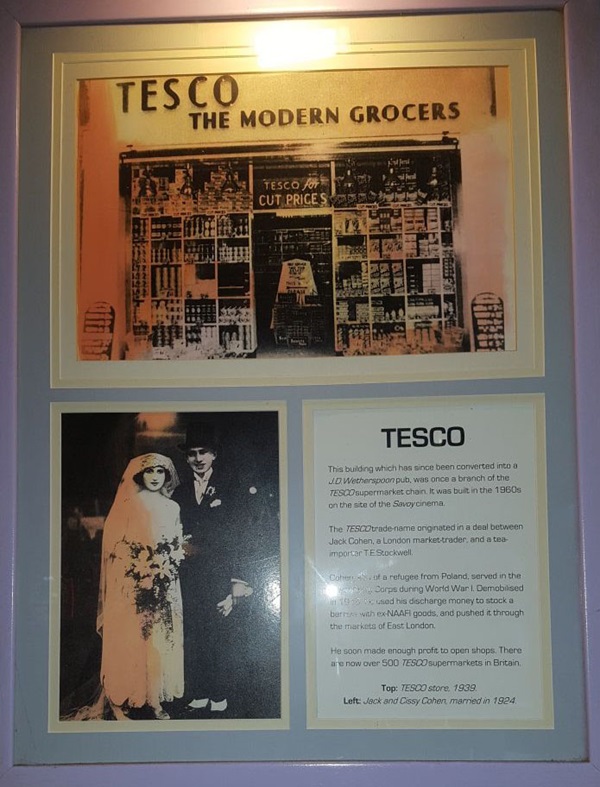
The text reads: This building which has since been converted into a J D Wetherspoon pub was once a branch of the Tesco supermarket chain. It was built in the 1960s on the site of the Savoy cinema.
The Tesco trade name originated in a deal between Jack Cohen, a London market trader, and a tea-importer TE Stockwell.
Cohen, son of a refugee from Poland, served in the Royal Flying Corps during World War I. Demobilised in 1919, he used his discharge money to stock a barrow with ex-NAAFI goods, and pushed it through the markets of east London.
He soon made enough profit to open shops. There are now over 500 Tesco supermarkets in Britain.
Top: Tesco store, 1939
Left: Jack and Cissy Cohen, married in 1924.
A print and text about the Savoy cinema.
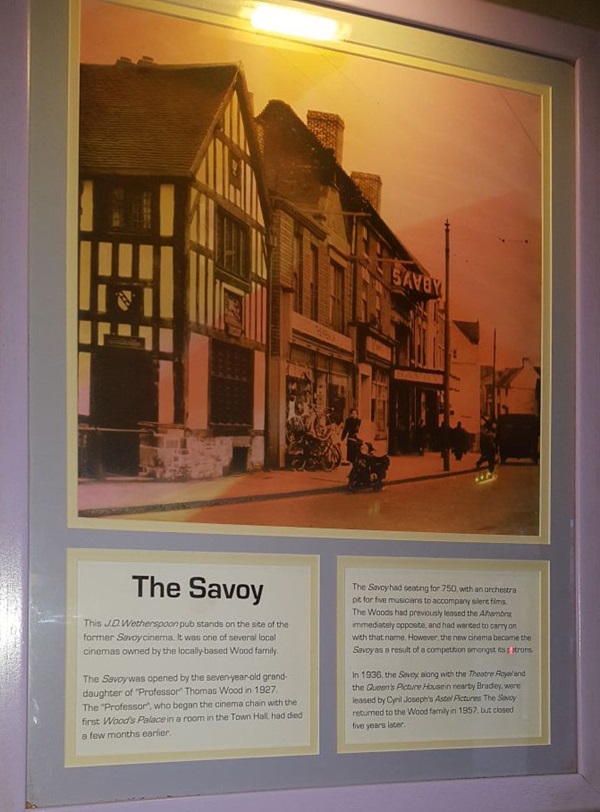
The text reads: This J D Wetherspoon pub stands on the site of the former Savoy cinema. It was one of several local cinemas owned by the locally based Wood family.
The Savoy was opened by the seven year old granddaughter of ‘Professor’ Thomas Wood in 1927. The professor, who began the cinema chain with the first Wood’s Palace in a room in the Town Hall, had died a few months earlier.
The Savoy had seating for 750, with an orchestra pit for five musicians to accompany silent films. The Woods had previously leased the Alhambra, immediately opposite, and had wanted to carry on with that name. However, the new cinema became the Savoy as a result of a competition amongst its patrons.
In 1936, the Savoy, along with the Theatre Royal and the Queen’s Picture House in nearby Bradley, were leased by Cyril Joseph Amstel Pictures. The Savoy returned to the Wood family in 1957, but closed five years later.
External photograph of the building – main entrance.
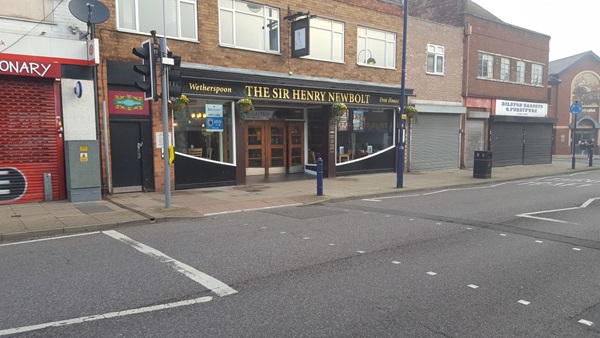
If you have information on the history of this pub, then we’d like you to share it with us. Please e-mail all information to: pubhistories@jdwetherspoon.co.uk